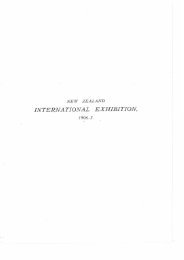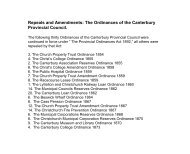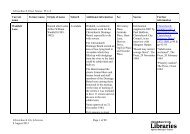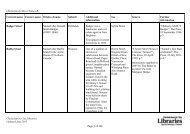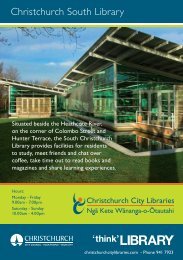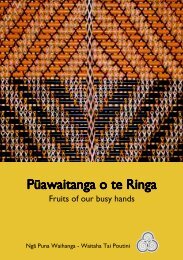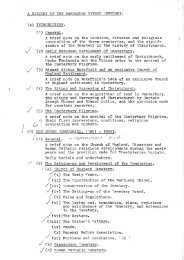Conservation Plan Addington Cemetery - Christchurch City Libraries
Conservation Plan Addington Cemetery - Christchurch City Libraries
Conservation Plan Addington Cemetery - Christchurch City Libraries
You also want an ePaper? Increase the reach of your titles
YUMPU automatically turns print PDFs into web optimized ePapers that Google loves.
2.1.2 <strong>Addington</strong> <strong>Cemetery</strong><br />
- the purchase of the land<br />
<strong>Conservation</strong> <strong>Plan</strong> for <strong>Addington</strong> <strong>Cemetery</strong><br />
In 1847 John Robert Godley, together with Edward Gibbon Wakefield, was instrumental in<br />
the establishment of the Canterbury Association whose plan was to “... found a colony in<br />
New Zealand upon high social and ecclesiastical principles, to carry out the religious and<br />
refined element, to transport from England a section of the people, to plant the Church of<br />
England in New Zealand and make the colony look just like home.”<br />
Thus from the outset, the Canterbury Colony with its chief city <strong>Christchurch</strong> was founded<br />
on the principles of the Anglican Church. There was to be an Anglican Cathedral at the<br />
physical heart of the <strong>City</strong>. The three main Squares of the <strong>City</strong> were to be named after the<br />
martyred Anglican Bishops, Cranmer, Latimer and Ridley (later Cathedral Square). All<br />
other religious groups simply fell under the category of ‘dissenters’. However as noted in<br />
A Sketch of the Early History of St Andrew’s Church <strong>Christchurch</strong>, N.Z. 1856‐1906, this was a<br />
curious statement given that “…there could be no dissenters where no state religion<br />
existed.” The issue of those other than Anglicans being classified as “dissenters” became<br />
somewhat a grievance as many did not wish to have their dead classified as ‘dissenters’. 1<br />
While Anglican Churches such as Holy Trinity Avonside and St Peter’s, Upper Riccarton<br />
established churchyard cemeteries, the Barbadoes Street <strong>Cemetery</strong> was set aside as the<br />
initial ‘public’ cemetery. The Barbadoes Street <strong>Cemetery</strong>, is the city’s oldest cemetery and<br />
was established in 1851. The cemetery, divided by Barbadoes Street, separates the Anglican<br />
(Church of England) section, on the eastern side, from the Roman Catholic and Dissenters<br />
section on the west. However while there was provision for Roman Catholics, Anglicans<br />
and ‘dissenters’<br />
there was no special provision for a burial ground for the Presbyterians. It<br />
as this issue (and the fact that once the cemetery had been consecrated by Bishop Harper2 w<br />
burials could not be performed by any other than a minister of the Anglican Church) that<br />
led to the Presbyterians seeking to establish a cemetery of their own.<br />
1 Jane Deans, A Sketch of the Early History of St Andrew’s Church <strong>Christchurch</strong>, N.Z. 1856-1906, <strong>Christchurch</strong><br />
Press, 1906 p.14<br />
2 Jane Deans who was instrumental in the establishment of the <strong>Addington</strong> <strong>Cemetery</strong> asked that the Deans’<br />
family plot, which was in the eastern Anglican section, be reserved from the formal consecration – John<br />
Deans had been buried there in 1854. Jane was apparently informed that if she was not happy with the<br />
current situation she could have the body disinterred and buried elsewhere. The decision was made to<br />
leave John in his plot and Jane was later buried there with him in 1911 – the service taken by the Anglican<br />
church. Later generations are buried at <strong>Addington</strong>.<br />
6



